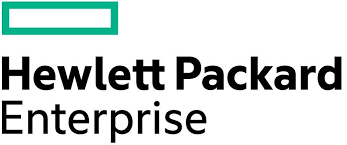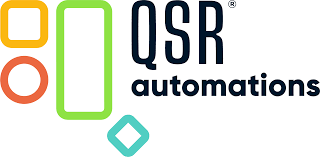What is a Learning Management System (LMS)
In the fast-paced world of education and corporate training, the ability to deliver effective learning experiences efficiently is paramount. This is where Learning Management Systems (LMS) come into play, revolutionizing how course content is created, delivered, managed, and tracked. Whether for higher education institutions or corporate training environments, LMS platforms have become indispensable in facilitating online learning and training management.
Defining Learning Management Systems (LMS)
A Learning Management System (LMS) is a software application or web-based technology used to plan, implement, and assess a specific learning process. It provides educators and trainers with a way to create and deliver content, monitor student participation, and assess student performance. LMS platforms also allow for the management of training materials and training courses, enabling users to access learning resources anytime and anywhere, ideally on mobile devices as well as desktops. This versatility makes LMS an essential tool in both academic and corporate settings, supporting a range of online courses and training programs.

Effective using a Learning Management System (LMS) to implement a worldwide on-demand product certification program
Here is an interesting case of implementing LMS in the corporate world:
On the corporate side, a standout instance is nCino, the worldwide leader in cloud banking, which successfully implemented LMS. They developed a global on-demand product certification program through the LMS for 40,000 customers, partners, and employees. This case study shows the impact an LMS can have on scaling training and development, highlighting the critical role of LMS in supporting business growth and enhancing employee, partner, and customer engagement. This indicates a significant scale at which the LMS was deployed for training and certification purposes across the organization's extensive network.
On the corporate side, a standout instance is nCino, the worldwide leader in cloud banking, which successfully implemented LMS. They developed a global on-demand product certification program through the LMS for 40,000 customers, partners, and employees. This case study shows the impact an LMS can have on scaling training and development, highlighting the critical role of LMS in supporting business growth and enhancing employee, partner, and customer engagement. This indicates a significant scale at which the LMS was deployed for training and certification purposes across the organization's extensive network.
The Key Components of an LMS
The core of any LMS includes several key components
Course Management:
Enables the creation, distribution, and modification of course content.
User management:
Facilitates the administration of user data, including progress tracking and performance analysis.
Communication Tools:
Provides mechanisms for learners and instructors to interact, such as forums, chat, and email.
Assessment and Testing:
Allows for the creation and management of quizzes, tests, assignments to evaluate progress.
Reporting and Analytics:
Generates detailed reports on learner activity, progress, and achievement.
The importance of various LMS components can vary depending on organizational needs, but for HR professionals, certain features stand out due to their impact on learning and development (L&D) effectiveness.
Advanced analytics and reporting capabilities are particularly valued as they enable HR to track the correlation between learning initiatives and key performance metrics like retention rates and employee productivity. Moreover, content authoring features are crucial for creating engaging and interactive eLearning content which drives talent development and aligns with organizational goals. The integration of collaborative tools to support peer learning using diverse content formats is also emphasized as a key component for L&D success.
Advanced analytics and reporting capabilities are particularly valued as they enable HR to track the correlation between learning initiatives and key performance metrics like retention rates and employee productivity. Moreover, content authoring features are crucial for creating engaging and interactive eLearning content which drives talent development and aligns with organizational goals. The integration of collaborative tools to support peer learning using diverse content formats is also emphasized as a key component for L&D success.
Types of Learning Management Systems
Learning Management Systems can be broadly categorized into two types:
For corporations looking to implement a Cloud-Based Learning Management System (LMS), notable examples of companies that have taken this route include:
HarperCollins (a leading book publisher that uses a next-generation LMS for distributing tailored content and training), Discovery (a global leader in real-life entertainment, employing cloud LMS for its learning solutions), ASOS (an online fashion and cosmetic retailer, which utilizes a cloud-based LMS to target groups of learners with specific content), Radisson Edwardian Hotels (Part of the hospitality industry, leveraging cloud LMS for training and development needs), Sony, Dell, Cisco, DHL (These tech and logistics giants use ProProfs LMS, a cloud-based platform, for their extensive training requirements).
On the other hand, companies that have opted for Installed LMS types, also known as On-Premises LMS, include NBC Universal (a well-known media and entertainment company, using LMS for employee development and compliance training), Virginia Department of Transportation (utilizing LMS for managing their learning and development needs effectively), Schwan Foods (a food production company that has implemented PeopleFluent for its learning management).
Each of these companies has chosen their LMS type based on various factors such as control over the LMS environment, data security, customization needs, and integration capabilities with existing systems. Cloud-based LMS offers the advantage of accessibility and scalability without significant infrastructure investment, while installed LMS solutions provide greater control over the learning environment and data, which can be crucial for certain organizations.
- Cloud-Based (Software as a Service, SaaS): Hosted on the cloud, these LMS platforms are accessible from anywhere, providing flexibility and scalability based on the number of users. They are maintained by LMS vendors, reducing the IT burden on organizations.
- Installed LMS: Requires installation on specific servers. This type gives organizations complete control over the LMS and its data but requires a dedicated IT team for maintenance.
For corporations looking to implement a Cloud-Based Learning Management System (LMS), notable examples of companies that have taken this route include:
HarperCollins (a leading book publisher that uses a next-generation LMS for distributing tailored content and training), Discovery (a global leader in real-life entertainment, employing cloud LMS for its learning solutions), ASOS (an online fashion and cosmetic retailer, which utilizes a cloud-based LMS to target groups of learners with specific content), Radisson Edwardian Hotels (Part of the hospitality industry, leveraging cloud LMS for training and development needs), Sony, Dell, Cisco, DHL (These tech and logistics giants use ProProfs LMS, a cloud-based platform, for their extensive training requirements).
On the other hand, companies that have opted for Installed LMS types, also known as On-Premises LMS, include NBC Universal (a well-known media and entertainment company, using LMS for employee development and compliance training), Virginia Department of Transportation (utilizing LMS for managing their learning and development needs effectively), Schwan Foods (a food production company that has implemented PeopleFluent for its learning management).
Each of these companies has chosen their LMS type based on various factors such as control over the LMS environment, data security, customization needs, and integration capabilities with existing systems. Cloud-based LMS offers the advantage of accessibility and scalability without significant infrastructure investment, while installed LMS solutions provide greater control over the learning environment and data, which can be crucial for certain organizations.
Benefits of Using an LMS
Implementing an LMS brings numerous benefits:
- Efficiency and AccessibilityStreamlines the delivery of training programs and online courses, making learning materials accessible from anywhere, at any time.
- ScalabilityEasily adapts to the growing needs of an organization or educational institution.
- Tracking and ReportingProvides comprehensive tools for tracking learner progress and performance, facilitating better management of training outcomes.
- Cost-EffectivenessReduces the costs associated with traditional learning methods, such as venue hire, travel, and printed materials.
- PersonalizationOffers personalized learning experiences tailored to the needs of individual learners.
Here are some great examples of implementing benefits within corporations to achieve outstanding results in learning experience and course content developing.
Onshape, a computer-aided design software company, leveraged the Thought Industries customer training platform to scale its customer onboarding program. This strategic move has had a positive impact on customer retention, demonstrating how effective training via an LMS can translate to improved business outcomes.


Craneware, which provides automated value cycle solutions, created the Craneware Academy using LearnUpon LMS and successfully trained over 650 customers in a single year, enhancing the customer experience and boosting retention rates.
Hewlett Packard Enterprise (HPE) chose SAP Litmos for its customer training division due to the platform's sophisticated features. The transition to this LMS enabled them to generate over $200 million in training revenue, illustrating the significant financial benefits an LMS can bring.


MuleSoft, which specializes in building application networks, built a training function with Learndot that includes multiple modes of learning. Their unified platform has not only streamlined product learning but has also supported company renewals.
QSR Automations, a global leader in restaurant technology, utilized Sciolytix to save time in delivering training to customers and reduce calls to their help desk, demonstrating efficiency in customer support through effective LMS implementation.


Bonfire, a procurement technology firm, used Northpass to scale its academy, leading to improved learning experiences for customers and a reduction in the number of support tickets.
LMS in Corporate Training
In the corporate sector, LMS is utilized extensively for employee training and development, compliance training, and professional development. It enables organizations to deliver targeted training courses efficiently, track employee progress, and ensure compliance with industry regulations. An LMS can also be integrated with other HR systems to align learning and development initiatives with overall business strategies.
In the corporate sector, LMS usage has demonstrated significant benefits, according to statistics from various sources. For example, 83% of companies currently use an LMS, which points to its widespread adoption in corporate training. Furthermore, organizations using LMS have reported holding a competitive edge, with 72% affirming this advantage. Large corporations, in particular, have embraced LMS platforms, with 57% utilizing these systems to enhance their training processes.
The commitment to LMS is further evidenced by the fact that 39% of US organizations plan to purchase LMSs in the following year. These figures reflect the critical role that LMS platforms play in corporate training and development, contributing to improved engagement, learning outcomes, and overall organizational performance.
In the corporate sector, LMS usage has demonstrated significant benefits, according to statistics from various sources. For example, 83% of companies currently use an LMS, which points to its widespread adoption in corporate training. Furthermore, organizations using LMS have reported holding a competitive edge, with 72% affirming this advantage. Large corporations, in particular, have embraced LMS platforms, with 57% utilizing these systems to enhance their training processes.
The commitment to LMS is further evidenced by the fact that 39% of US organizations plan to purchase LMSs in the following year. These figures reflect the critical role that LMS platforms play in corporate training and development, contributing to improved engagement, learning outcomes, and overall organizational performance.
LMS Features
Key basic LMS features include:
These real-world applications demonstrate how LMS features contribute to more structured, engaging, and compliant training environments in corporate settings.
- Mobile Learning: Supports learning on mobile devices, enabling learners to access content on the go.
- E-commerce Integration: Allows for the sale of online courses directly through the LMS platform.
- Gamification: Incorporates game elements into training to increase engagement and motivation.
- Social Learning: Enables learners to share knowledge and learn from each other through social media-like features.
- Blended Learning: Supports a mix of online and in-person learning activities.
- Here are some advanced opportunities which a provided by basic features:
- Training Course Creation and Management: HR departments use LMS to create interactive and multimedia-rich training courses, enabling them to tailor course content to specific job roles or departments.
- Compliance Training: Industries with stringent regulatory requirements utilize LMS to disseminate compliance training materials, ensuring that all employees are up to date with the latest regulations and company policies.
- Online Courses Accessibility: With the shift to remote work, companies leverage LMS platforms to provide employees with access to online courses, allowing for continuous learning and development regardless of location.
- Employee Training Tracking: LMS features like progress tracking and reporting help managers monitor employee training outcomes, identify skill gaps, and provide targeted training programs to address specific needs.
- Training Materials Repository: An LMS acts as a centralized repository for training materials, where employees can find everything from onboarding documents to advanced skill training resources.
- LMS Vendors Custom Solutions: Companies often work with LMS vendors to customize the LMS features according to their unique training management requirements, incorporating branding and integrating with existing HR systems.
These real-world applications demonstrate how LMS features contribute to more structured, engaging, and compliant training environments in corporate settings.
Trends and Innovations in LMS
The LMS landscape is continuously evolving, with trends and innovations shaping its future
Artificial Intelligence (AI)
AI is being used to personalize learning experiences, automate administrative tasks, and provide predictive analytics.
Learning experience platforms
A newer category of platforms that focus on delivering a personalized and exploratory learning experience beyond traditional LMS capabilities.
Microlearning
Focuses on delivering short, focused chunks of content to fit into the learner's busy schedule.
Best Practices for LMS Usage
To maximize the effectiveness of an LMS, consider the following best practices:
Engage and Motivate Learners
Use interactive content, gamification, and social learning features to keep learners engaged.
Regularly Update Content
Keep course content fresh and relevant to ensure it meets the learning needs of your audience.
Provide Support and Training
Offer support and training for both instructors and learners to make the most of the LMS features.
Use Data and Feedback
Analyze LMS data and feedback to continually improve the learning experiences.
Implementing an LMS can transform the delivery of education and training, making learning more accessible, efficient, and tailored to the needs of the learner. As technology continues to evolve, the capabilities and potential of LMS platforms will only expand, further enhancing their value in both educational and corporate settings.
By clicking on the button, you consent to the processing of personal data and agree to the privacy policy.
Unleash the power of The Evolve App and take your training programs to new heights.
Get started today and witness the transformative impact on your workforce. Start your journey with Evolve App today and unlock your full potential!

